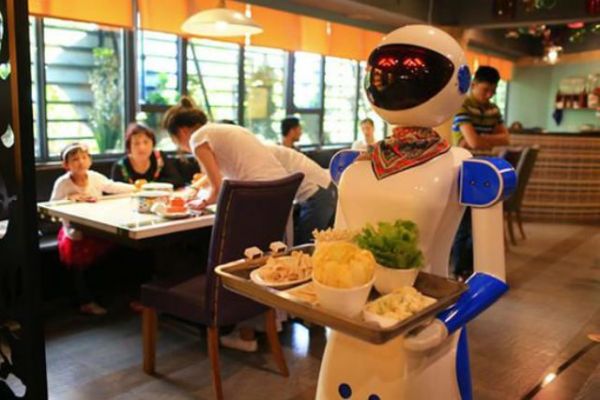Published on the 11/11/2021 | Written by Heather Wright

Waiter, waiter…
From burger flipping Flippy and Sally the salad robot, to robot delivery, 50 percent of US restaurants are apparently planning to deploy automation in next two to three years as staff shortages bite.
But robots are just the tip of the iceberg when it comes to smart systems for the hospitality sector.
The Global State of the Hospitality Industry report says on average, 87 percent of restaurant industry respondents either somewhat’ or ‘strongly’ agreed that new technology adoption over the last two years has been critical for their business’ survival.
“Many of these new technologies are going to evolve and continue to define the future.”
Covid-19 has dealt a particularly bad hand for the hospitality sector, with travel – and often restaurants – out of bounds for many of us at least for parts of the past two years. But it’s also been a time for companies to innovate and adopt new systems.
Justin Pierce, associate professor at Torrens University, says last year saw an unprecedented growth in the adoption of digital technologies for hotels and the hospitality industry.
“Although the pandemic is a temporary disruption, many of these new technologies are going to evolve and continue to define the future,” he said in a blog.
He points to automated revenue management tools using machine learning and AI to better forecast demand and model occupancy rates; evolving search and booking databases and increased personalisation via machine learning, suggesting additional services to guests most likely to take up the offer, as ways tech is now being applied to help the hotel sector.
Virtual reality too, has been a winner, Pierce says, noting VR travel company Ascape reported a 60 percent increase in VR app downloads from December 2019 to April 2020.
Last year, as it looked to salvage its battered tourism sector, Singapore turned to AI-powered systems for digital concierge offerings – aka chatbots which can handle contactless ordering for dine-in services, manage crowd control and conduct health declarations – SaaS platforms for improved bookings, automated expense reporting and cost saving insights, and customised itinerary planners which include real time crowd monitoring.
Vouch co-founder Joseph Ling, told CNBC Covid has actually helped his business, which provides the chatbot service. Vouch modified its in-room dining ordering system to enable takeaways and deliveries in the early days of Singapore’s lockdown. The company provided the feature free of charge to hotels during lockdown, and reaped the benefits post-lockdown signing up 15 percent of Singapore’s hotel room stock.
Meanwhile the Lightspeed Global State of the Hospitality Industry shows restaurants are turning to automation to keep business running through a labour crunch but its online ordering that’s the ‘must have feature’ for consumers.
IBISWorld forecast the Australian online food ordering and delivery platforms market to grow 12.8 percent in 2021 to AU$847.9 million. That’s on top of the big growth seen in 2020, when the market jumped from $643 million to $756 million. (It’s not, however, as big as the 2018-19 jump from $467 million.)
In May, a Roy Morgan report showed the second lockdown in Victoria had increased state-wide usage of food delivery apps to 36.1 percent.
But Lightspeed’s Global State of the Hospitality Industry report also notes that most people want to support restaurants directly – ordering from a restaurant rather than a third-party app.
“So if your business isn’t on board with a POS-integrated online ordering system, it’s time to look into one,” the report says.
“Guests want to support your business directly so an integrated online ordering platform owned, managed and promoted by you is key to saving third-party fees.”
And while many areas are seeing lockdowns end, consumers surveyed are keen to keep the takeout according to the survey, which shows ordering takeout on par with dining out more often in many countries as key ways consumers plan to support restaurants in the coming year.
Having QR codes and digital menus was also flagged by consumers as a way they’d feel safer at restaurants in future, along with being able to self order at the table.



























